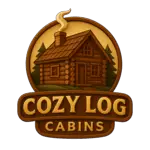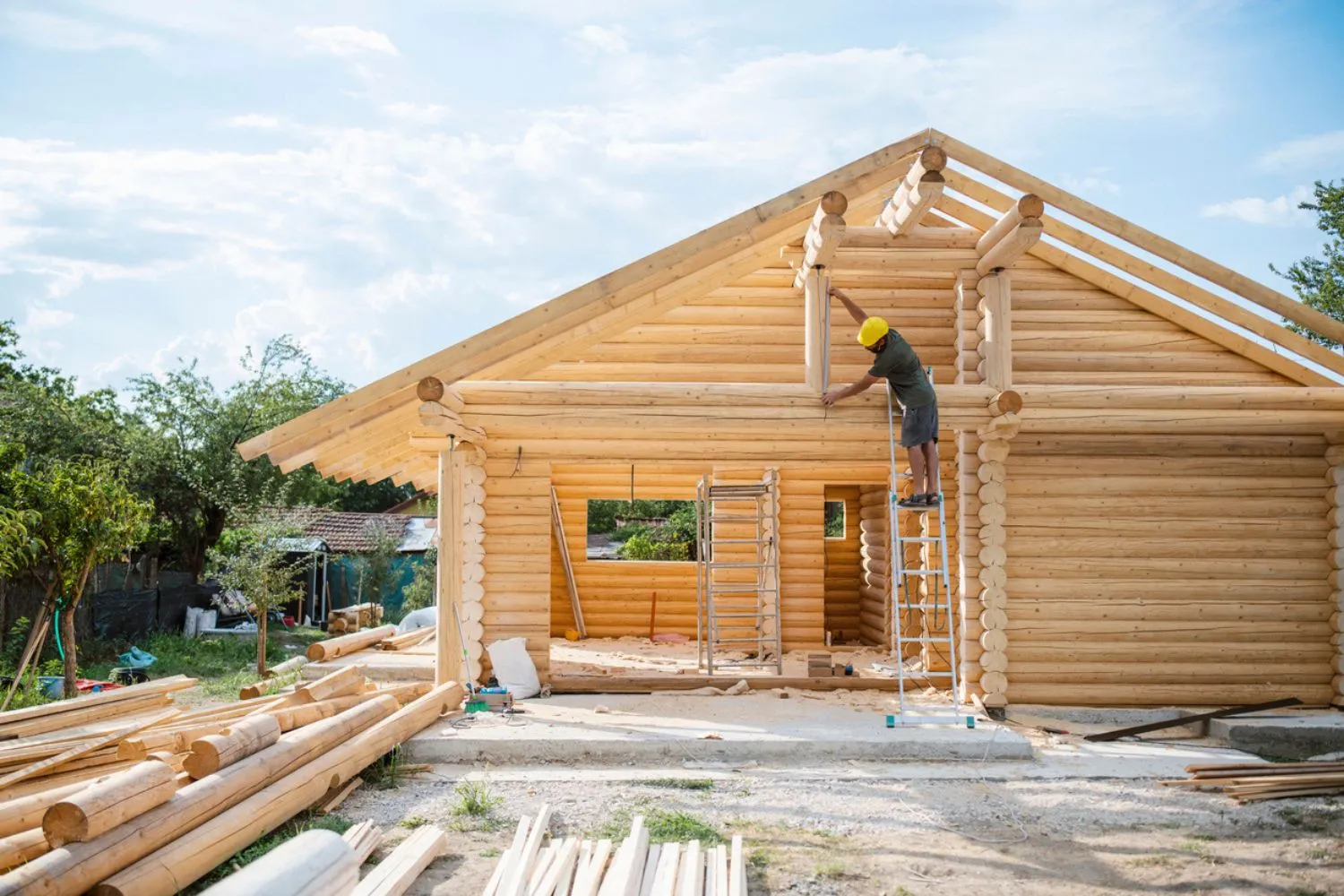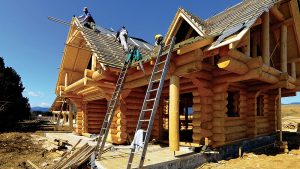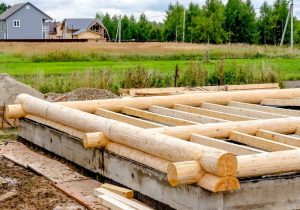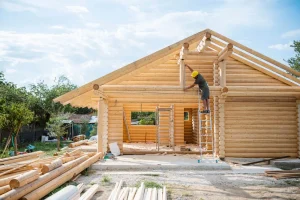A lot of people want to build a wood cabin because they love the look of natural materials and the peace and quiet of living in a cabin. Finding out how much it really costs to build a log house is important before you start, whether you want a small weekend getaway in the woods or a big family home in the middle of nature. The simple beauty of log houses will never go out of style, but the prices can change a lot based on the design, area, materials, and work. We’ll break down all the important factors that affect prices in this in-depth guide. This will help you make realistic plans and avoid mistakes during building.
How Much Does It Cost to Build a Log Cabin?
The price of making a log house changes based on its size, level of difficulty, and the materials you pick. It costs about $125 to $300 per square foot, but it depends on where you live and what kind of finish you want. This means that a small cabin of 500 square feet could cost anywhere from $60,000 to $100,000, while a bigger cabin of 2,000 square feet could cost anywhere from $250,000 to $600,000 or more.
However, these figures can change quickly if you build in a certain way. A do-it-yourself log house kit that costs between $40,000 and $80,000 might be cheaper, but a luxury cabin built just for you with high-end finishes could cost over $700,000. Figuring out where your budget falls on this level will help you choose between basic, mid-range, and luxury.
Key Things That Affect How Much a Log Cabin Costs
The price of your log home will depend on several important factors. Being aware of each one helps you make decisions that are better for your goals and budget:
1. Place and cost of land
Getting land is the first thing that needs to be done to build a log house. Land costs change a lot from place to place. It might be cheaper per acre to buy a forest plot that is far away, but utilities and road access might cost more. Homes that are near mountains or lakes usually cost more. You should also include site preparation in your budget. Depending on how hard the land is, cutting trees, leveling the ground, and putting in roads can add $5,000 to $25,000 to the cost.
2. Cabin Size and How Hard It Is to Design
The cost of building a home goes up as it gets bigger and more complicated. Cabins with decks, high ceilings, or many rooms are more expensive than those with simple rectangular floor plans. A simple one-story house is usually less expensive than an A-frame or two-story building. Every extra square foot you add is an extra cost, and not just for the materials. You’ll also have to pay more for labor, water, and electricity.
3. Type of Wood and Glue
The type of wood you choose has a big effect on both how it looks and how much it costs. Common woods like pine and spruce aren’t too expensive. On the other hand, quality woods like cedar and cypress cost more but last longer and are less likely to get damaged by bugs or rot. You can expect to pay between $25,000 and $80,000 for just the logs, based on the type and quality.
4. The cost of labor and building
Hiring pros to build your log house is likely to cost you the most. Most projects have fees that make up 30% to 50% of the total cost. You could save a lot of money if you learn how to build something yourself from a pre-cut kit. But even if you do most of the building yourself, you should still hire pros for the plumbing, electricity, and base work.
5. The infrastructure and utilities
If your land doesn’t have water, power, or sewage, installing these things can cost a lot of money. It is easier to connect to current utility lines, but if you want to live off the grid, you may need to set up solar panels, a well, or a septic system. Depending on how you set up your home, these improvements can cost anywhere from $10,000 to $40,000.
6. Licenses and rules in your area
Building codes are different in each area, so find out what the rules are in your area before you start building. The price of a permit can be anywhere from $500 to $5,000, based on where you live and how complicated your job is. In some places, you may also need to do environmental effect studies or soil tests, which will cost you more up front.
Breakdown of the Main Costs of Building a Log Cabin
To enhance your understanding, the breakdown of the total cost for a typical middle-range log cabin project is as follows:
- Cost to buy land: $20,000 to $100,000
- Setting up the site costs $5,000 to $25,000
- $10,000 to $30,000 for the foundation
- Cost of logs and materials: $25,000 to $80,000
- $50,000 to $150,000 for labor and building
- Roofs, windows, and doors cost between $15,000 and $40,000.
- Finishes inside (floors, kitchen, bathroom): $20,000 to $60,000
- $10,000 to $40,000 for utilities like water, electricity, septic, and well
Inspections and permits cost $500 to $5,000.
You can get a general idea of where your money goes from these figures. Remember that these numbers can go up if you want unique touches, the building is in a remote area, or you use high-end materials.
How to Build a Log Cabin for Less Money
There are many smart ways to cut costs when working on a budget that won’t hurt the quality. Start by picking a floor plan with few bends and roof angles. This will save you money on materials and work. Another cheap option is to build your own log cabin from a kit. This is especially good for smaller buildings or weekend houses.
You can also save money by getting wood from nearby sources instead of bringing expensive species. Using salvaged wood gives your home character and helps the environment while also cutting down on the cost of materials. You can also save a lot of money by doing your own finishing work, like painting or sealing.
Finally, plan your building for a time when it isn’t as busy. When work slows down in the fall or winter, contractors may offer savings.
You shouldn’t ignore these hidden costs.
Many people who are building a house only plan for the costs they can see, but it’s easy to forget about the costs they can’t see. Things like furniture, tools, and decorations can quickly add up to $10,000 to $30,000, based on your taste. Besides the initial cost, you’ll also have to plan for ongoing costs like resealing logs every couple of years and insurance.
If you’re building in the country, you may be shocked by the cost of supplies and tools. Long-distance shipping can cost more from some companies, especially if your spot is hard to get to. Planning ahead and budgeting for these expenses can help you avoid unexpected financial stress.
Q&A
1. How much does it cost to make a wood house that’s 1,000 square feet?
The price of a 1,000-square-foot log cabin ranges from $125,000 to $250,000, based on how complicated the plan is, the materials used, and the rate of work.
2. Is it more cost-effective to purchase a prefabricated log house kit or to construct one from scratch?
Usually, log house kits are cheaper because they are already cut out and ready to put together. You’ll still have to pay for things like land, permits, the base, and utilities, though.
3. What kind of wood for log houses is the least expensive?
Pine and spruce are the woods that won’t break the bank. They’re easy to find and work with, but they need more upkeep than high-quality woods like cedar.
4. Can I save money by building my own log cabin?
Yes, making things yourself can save you 20–40% on work. But before you start, you need to make sure you have the right tools, information, and licenses. For structural and electrical work, it is still best to hire pros.
5. How often should you take care of a log cabin?
Every year, you should check on your wood house and reseal the outside every three to five years to keep it safe from water, bugs, and UV damage.
In conclusion
Building a log house is a fun adventure that combines skill, nature, and your own unique vision. Building your dream home can be very expensive, depending on its size, materials, and location. But if you plan ahead and make a budget, you can make it happen. Whether you choose a cozy house kit or a high-end getaway that is built by hand, the most important thing is to know how much everything will cost up front. If you do what you need to do, your log cabin will be more than just a house. It will be a permanent refuge where nature and comfort live together in perfect harmony.
